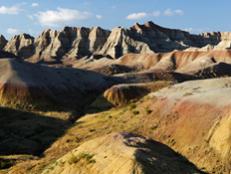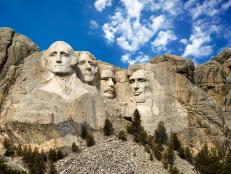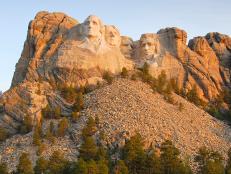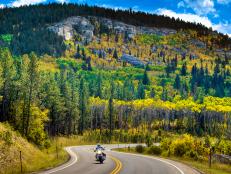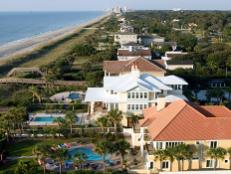15 Spectacular Sights in South Dakota
Set in the southwestern part of the state, South Dakota’s Black Hills and Badlands region boasts stunningly diverse scenery, from rugged rock formations to sprawling prairies. Don’t miss these must-see spots on your visit.

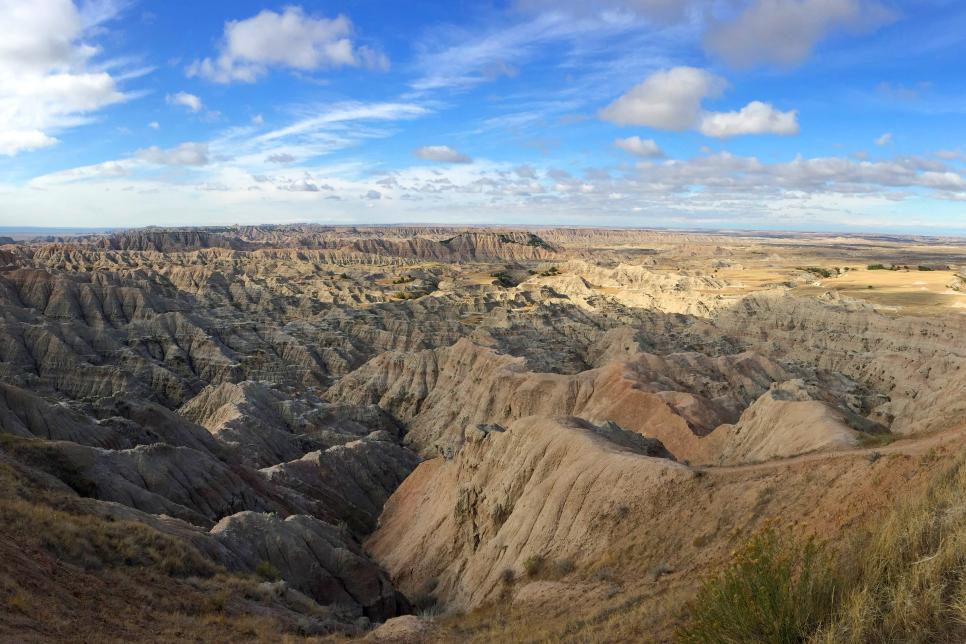
Photo By: Shannon Petrie
Photo By: Shannon Petrie
Photo By: South Dakota Department of Tourism
Photo By: Shannon Petrie
Photo By: South Dakota Department of Tourism
Photo By: South Dakota Department of Tourism
Photo By: South Dakota Department of Tourism
Photo By: South Dakota Department of Tourism
Photo By: South Dakota Department of Tourism
Photo By: South Dakota Department of Tourism
Photo By: South Dakota Department of Tourism
Photo By: Shannon Petrie
Photo By: South Dakota Department of Tourism
Photo By: South Dakota Department of Tourism
Photo By: South Dakota Department of Tourism
Badlands National Park
With its striking rock formations and distinctive layers of color, Badlands National Park has a surreal, otherworldly quality. The Lakota people were the first to call the area "mako sica," or "land bad," and in the early 1900s, French-Canadian fur trappers called it "les mauvais terres pour traverse," or "bad lands to travel through." Today, this stunning landscape is easy to navigate, thanks to the 31-mile Badlands Loop State Scenic Byway. Give yourself at least a couple of hours to complete this drive, and to admire the views at a few of the designated scenic overlooks. If you want to stretch your legs, there are numerous hiking trails to explore, including the popular Door, Window and Notch trails.
Badlands Wildlife
Badlands National Park is home to dozens of species of animals. Be on the lookout for prairie dogs, bison, pronghorn, bighorn sheep, eagles, hawks and other wildlife.
Mount Rushmore National Memorial
Nearly 3 million people visit Mount Rushmore each year to behold the 60-foot faces of four great American presidents: George Washington, Thomas Jefferson, Theodore Roosevelt and Abraham Lincoln. Almost 400 people worked on this incredible sculpture, which took 14 years and $1 million to complete. Visit at sunrise — when the mountain takes on a golden hue — for some of the best photo ops. Be sure to walk the Presidential Trail for a close-up view of the faces, and check out the Sculptor’s Studio to see artist Gutzon Borglum’s last scale model of the monument, made in 1936 during the construction process.
Custer State Park
South Dakota’s largest state park, Custer State Park boasts 71,000 acres of diverse terrain — from grassy meadows to soaring rock formations — and a wide array of wildlife. The park is home to about 1,300 bison, one of the largest publicly owned herds in the world. You’re likely to see them while driving the 18-mile Wildlife Loop Road, along with pronghorn, prairie dogs, mountain goats and burros. Visit early in the morning or later in the evening, when the animals are most active.
Custer State Park Buffalo Roundup
Each September, cowboys, cowgirls and park staff saddle up to corral Custer State Park’s 1,000+ bison. While the primary purpose of the roundup is to sort and vaccinate the herd, it makes for quite a show: Thousands of people (more than 21,000 in 2017) visit the park to watch the event and feel the thunder of the stampede. Two viewing areas — north and south — are set aside for spectators. The roundup starts at 9:30 a.m., but you’ll want to arrive early (between 6:15 and 7:30 a.m.) so you don’t miss any of the action.
Sylvan Lake
Of Custer State Park’s five lakes, Sylvan Lake is the most recognizable, perhaps for its role in National Treasure 2: Book of Secrets starring Nicolas Cage. In the film, the lake appears to be directly behind Mount Rushmore, though in reality it’s several miles away. Take a stroll along the picturesque waters, or you can rent a canoe or go for a swim. Sylvan Lake — and nearby Sylvan Lake Lodge — are also popular spots for weddings.
Black Elk Peak
At 7,242 feet, Black Elk Peak is the highest point in the United States east of the Rocky Mountains. If you’re up for a hike, there are several trails that lead to the summit, the most popular being a 3.5-mile trail starting in Custer State Park near Sylvan Lake. At the top, take in the amazing views of the surrounding Black Hills, and explore a historic stone fire tower dating back to 1939. Originally named Harney Peak, Black Elk Peak was renamed in 2016 in honor of respected Lakota elder and medicine man Nicholas Black Elk.
The Needles
Towering over Custer State Park, these dramatic granite spires are a must-see. Get a prime view of the formations by driving the 14-mile Needles Highway, where you’ll also discover pine and spruce forests, and meadows surrounded by birch and aspen trees. Completed in 1922, this roadway was meticulously planned by former South Dakota Governor Peter Norbeck, who marked the entire course on foot and by horseback.
Needle’s Eye
Don’t miss this unique rock formation on your Needles Highway drive, named for its opening created by years of wind, rain, freezing and thawing.
Iron Mountain Road
This winding, 17-mile road connects Custer State Park and Mount Rushmore National Memorial. Along the way, three tunnels frame the monument for an unforgettable view. Iron Mountain Road is also famous for its three spiral-shaped "pigtail bridges," which allow travelers to drop or gain altitude quickly. This motorway was designed to be driven slowly — take your time and enjoy the scenery.
Crazy Horse Memorial
The world’s largest mountain carving in progress, work on Crazy Horse Memorial started in 1948, after Lakota Chief Henry Standing Bear asked sculptor Korczak Ziolkowski to create a lasting memorial to the Native American people. Today, his family and supporters continue his vision for the sculpture, which will be 641 feet long and 563 feet high when completed. During your visit to Crazy Horse, browse some of Ziolkowski’s other work in his studio, then compare a scale model of the memorial with the colossal carving that's underway. Your admission fee helps finance the project, as the memorial does not accept federal or state funding.
Crazy Horse Up Close
In 1998, workers completed the 87 1/2-foot-tall face of Crazy Horse, who was a Lakota war leader. If you want an up-close look at the mountain, visit during the annual Volksmarch, a 10K roundtrip hike to the arm of the sculpture. You can also take a trip to the top by becoming a Crazy Horse Story Teller through a $125 gift to Crazy Horse Memorial Foundation.
Wind Cave National Park
Wind Cave, one of the oldest national parks in the country, offers two very different worlds to explore: Above ground, the park’s 33,851 acres of prairie grasslands and forested hillsides are home to elk, bison, prairie dogs and other wildlife. Below the surface lies one of the longest cave systems in the world.
Below the Surface
With 141 miles of explored passages, Wind Cave is known for its rare formations, including boxwork, popcorn and frostwork. Ranger-guided cave tours are offered daily except for Thanksgiving, Christmas and New Year's Day.
Jewel Cave National Monument
About a 30-minute drive from Wind Cave National Park, you’ll find another underground marvel: Jewel Cave. The third-largest cave system in the world with more than 190 miles of mapped and surveyed passages, this national monument was named for the glittering calcite crystals that line its walls. Guided tours are available at scheduled times throughout the year.
